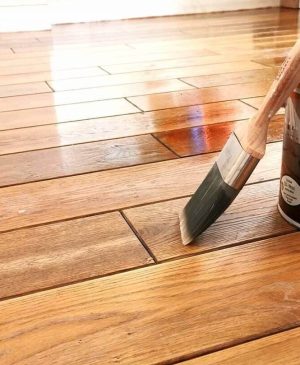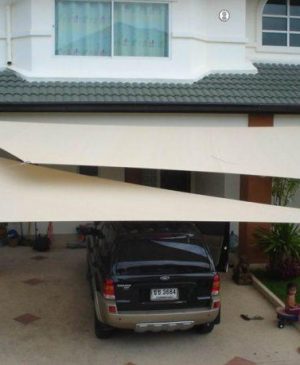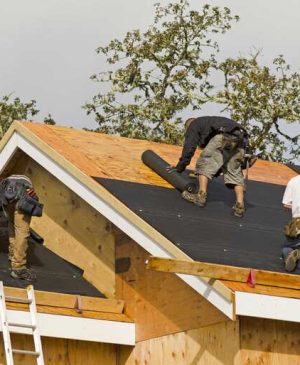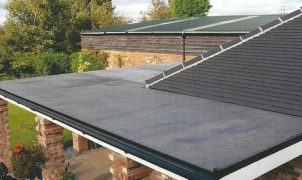As energy costs continue to rise and concerns about environmental sustainability become more pressing, homeowners are increasingly seeking ways to improve their homes with efficient cooling systems and energy-saving solutions. Not only do these improvements help reduce utility bills, but they also enhance comfort and contribute to the global effort to reduce carbon footprints. From simple adjustments to more sophisticated upgrades, there are numerous ways to make your home cooler and more energy-efficient. This article will explore various strategies for enhancing your home’s cooling and energy-saving performance, providing both immediate and long-term benefits.
1. Upgrade Insulation to Retain Cool Air
Proper insulation is one of the most effective ways to maintain a cool indoor environment and conserve energy. During the summer, a well-insulated home keeps cool air in and prevents the scorching heat from entering. Insulation works by creating a barrier that reduces heat transfer, making it easier to keep your home at a comfortable temperature without relying heavily on air conditioning.
Consider adding insulation to areas like the attic, walls, and floors, as these are where most heat gains occur. If your home is older, it’s likely that insulation may have settled over time, becoming less effective. A professional can help assess the quality of your insulation and recommend upgrades. Additionally, consider using reflective or radiant barriers in your attic, which help reflect heat away from the home and keep temperatures cooler indoors.
2. Install Energy-Efficient Windows
Windows are a significant source of heat loss and gain. Poorly insulated windows can allow hot air to enter during the summer, making your cooling system work harder to maintain a comfortable temperature. To remedy this, you can replace old windows with energy-efficient ones that offer better insulation and reduce the transfer of heat.
Double or triple-pane windows are particularly effective at keeping indoor temperatures stable, as they trap air between layers of glass, acting as an insulating barrier. Additionally, consider installing Low-E (low emissivity) windows, which have a special coating that reflects heat while still allowing natural light to enter. These windows can make a substantial difference in both your cooling costs and overall comfort.
3. Use Smart Thermostats for Better Control
A smart thermostat is a game-changer when it comes to cooling your home efficiently. These devices allow you to set temperature schedules and adjust settings remotely through your smartphone. By learning your preferences and habits, smart thermostats can automatically adjust the temperature based on when you are home or away, preventing unnecessary cooling when no one is around.
In addition to reducing energy consumption, smart thermostats also give you the flexibility to optimize your cooling system according to the time of day. For example, you can set your air conditioner to run during the cooler parts of the day and reduce cooling when the sun is at its peak. This targeted approach to energy use can result in substantial savings over time.
4. Seal Leaks and Gaps in the Home
One often overlooked but crucial step in improving your home’s cooling and energy efficiency is ensuring that there are no air leaks or gaps in your home’s envelope. Leaky doors, windows, or ducts can lead to cool air escaping and warm air entering, making it harder for your cooling system to maintain the desired temperature.
Sealing gaps around windows and doors with weatherstripping or caulking is a simple, cost-effective way to prevent energy loss. Don’t forget to check around electrical outlets, light fixtures, and baseboards—these areas can often harbor small leaks that, over time, add up to significant energy loss. In addition, make sure your ducts are properly sealed and insulated to prevent the cool air from escaping before it reaches the intended rooms.
5. Consider Energy-Efficient Cooling Systems
When upgrading your cooling system, choosing an energy-efficient air conditioner or cooling unit can have a profound impact on your home’s energy usage. Energy-efficient models, such as those with a high Seasonal Energy Efficiency Ratio (SEER), use less electricity to cool the same amount of space. This can help reduce your energy bills while maintaining a comfortable indoor temperature.
For homes with central air systems, upgrading to a more efficient unit or ensuring your system is regularly serviced and cleaned can improve its performance. If you live in a smaller home or apartment, a high-efficiency ductless mini-split system might be an ideal choice. These units provide targeted cooling and eliminate the need for ducts, further improving energy efficiency.
Another option is evaporative coolers, also known as swamp coolers. These systems use the natural process of water evaporation to cool the air, making them an eco-friendly and energy-efficient alternative to traditional air conditioning in dry climates.
6. Utilize Ceiling Fans for Air Circulation
Ceiling fans are a fantastic, low-cost way to improve comfort in your home and reduce the need for excessive air conditioning. These fans circulate the air, making the room feel cooler by increasing the evaporation of sweat on your skin, which in turn helps your body stay cool.
During the warmer months, you can set the ceiling fan to rotate counterclockwise, which pushes cool air down and creates a breeze. Using ceiling fans in combination with your air conditioning system allows you to raise the thermostat by a few degrees while still maintaining a comfortable indoor temperature. This simple addition can reduce your cooling costs and increase overall energy efficiency.
7. Incorporate Natural Ventilation
Harnessing natural ventilation is one of the oldest yet most effective methods of cooling your home. By strategically opening windows and allowing fresh outdoor air to circulate, you can cool your home without the need for air conditioning. The key is to create cross-ventilation by opening windows on opposite sides of the house, allowing the cool outdoor air to flow through and push hot air out.
If you live in an area with a cooler evening breeze, open your windows during the night to allow the house to cool naturally. This can reduce the amount of time your air conditioning system needs to run the next day. Additionally, consider installing vents in the highest points of your home, such as in the attic or upper floors, to allow hot air to escape naturally as cooler air enters.
8. Install Solar Panels for Sustainable Cooling
Solar panels are becoming increasingly popular among homeowners who want to reduce their environmental footprint and lower energy costs. By generating electricity from the sun, solar panels can power your cooling system, making it more energy-efficient and sustainable. Installing solar panels can offset the electricity needed to run your air conditioning and other appliances, saving you money on utility bills while reducing your home’s carbon emissions.
Additionally, solar panels are eligible for tax credits and incentives in many regions, making the initial investment more affordable. Over time, the energy savings and potential increase in property value can make solar panels a smart, long-term solution for homeowners seeking both energy independence and cooling efficiency.
9. Landscape Strategically to Provide Shade
Landscaping can have a significant impact on your home’s cooling needs. Planting trees or installing trellises with climbing plants on the south and west sides of your home can provide natural shade, reducing the amount of direct sunlight that enters your windows and walls. This can help lower indoor temperatures and reduce the load on your cooling system.
In addition to trees, consider installing reflective roofing materials or shade sails over outdoor spaces like patios or balconies. These additions can help block heat from entering your home and reduce the need for mechanical cooling.
10. Adopt Energy-Efficient Lighting
Though not directly related to cooling, energy-efficient lighting can contribute to a cooler home by reducing the heat generated by traditional incandescent bulbs. Energy-efficient lighting options, such as LED bulbs, generate far less heat, helping to keep your home cooler. Additionally, LEDs use a fraction of the energy that incandescent bulbs consume, further reducing your home’s overall energy consumption.
Conclusion
Improving your home’s cooling and energy efficiency is not just about installing a new air conditioning unit or replacing windows—it’s about taking a holistic approach to your home’s overall energy performance. From enhancing insulation and sealing air leaks to incorporating natural ventilation and using smart technologies, every adjustment you make contributes to a more sustainable, comfortable, and cost-effective living space.
With these strategies in place, not only will your home be cooler during the hotter months, but you will also enjoy significant long-term savings on energy bills, all while doing your part to reduce your environmental footprint.


















